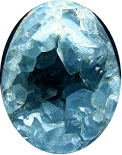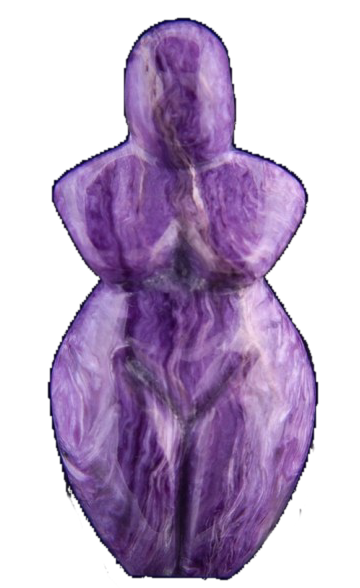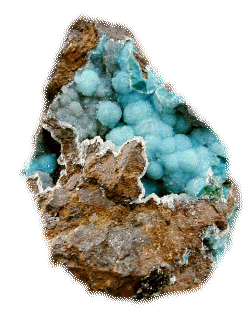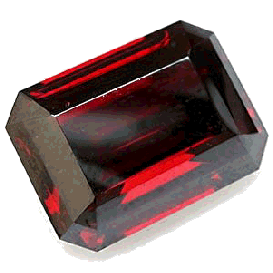
Celestine
Celestine or Celestite is named for its celestial blue colour, it was discovered in Pennsylvania in 1791. Celestine forms in sediments under the ocean and is often found in fossil cavities.
Strontium is used in the manufacture of fireworks, glazes and metal alloys.

Charoite
First found in the 1940s in Russia and commercially available from 1970s. Although formed by metamorphism of limestone, this stone is only found in the Charo river valley in Russia, possibly due to the unique properties of the stones in that area. The purple swirls of this complex rock make it a stunning stone.

Chrysocolla
This stone occurs in massive opaque formations, often with a grape like appearance.
Named after the Greek "chrysos"(gold) and "kolla"(glue), derived from the fact it was used in ancient times by goldsmiths when soldering gold.
Closely associated with copper, it is often found alongside azurite, malachite and turquoise.
Chrysocolla is said to enhance the feeling of goodwill towards your fellow man and to bring out your feminine attributes.

Cuprite
Found in deposits rich in copper, cuprite is two thirds copper and cochineal red or ruby red in colour.
Both opaque massive and crystals are found.
Often found intergrown with other copper oxides, azurite, malachite and chrysocolla.
| Latest Trends | Ordering Information | debbie@silkpixie.com | Delivery & Returns |


